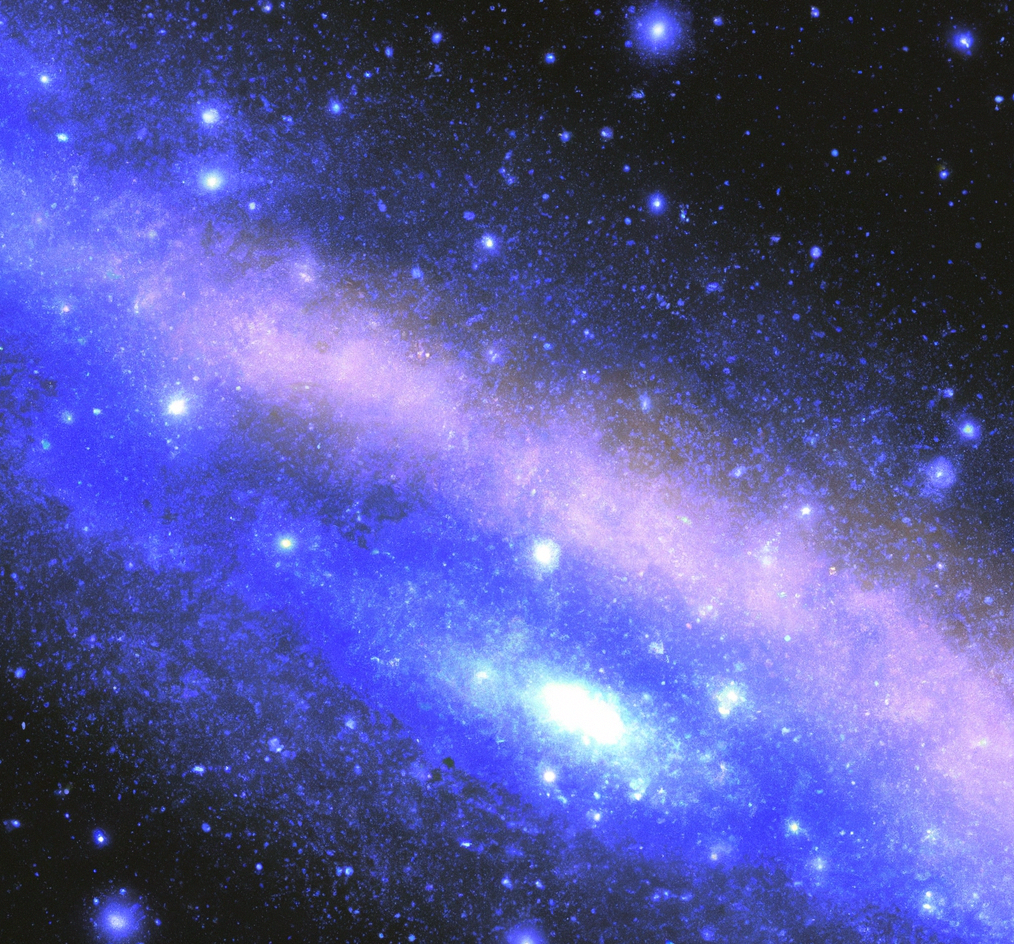Preston Robinette

Sept. 2024
- Starting a Student Researcher position at Google on the Gemini Live Team.
May 2024
- Headed to Google for the summer as a software engineering intern.
Apr. 2024
- Presented a talk at the International Conference on on Formal Methods in Software Engineering (FormaliSE) 2024 on a Case Study: Neural Network Malware Detection Verification for Feature and Image Datasets.!
Feb. 2024
- Successfully defended my Qualification Exam on Deep Learning Enabled Methods for Information Hiding!
Sept. 2024
- Starting a Student Researcher position at Google on the Gemini Live Team.
May 2024
- Headed to Google for the summer as a software engineering intern.
Apr. 2024
- Presented a talk at the International Conference on on Formal Methods in Software Engineering (FormaliSE) 2024 on a Case Study: Neural Network Malware Detection Verification for Feature and Image Datasets.!
Feb. 2024
- Successfully defended my Qualification Exam on Deep Learning Enabled Methods for Information Hiding!
Jan. 2024
- Paper on Case Study: Neural Network Malware Detection Verification for Feature and Image Datasets accepted at the International Conference on on Formal Methods in Software Engineering (FormaliSE) 2024!
Oct. 2023
- Presented a talk at AISoLa 2023: Bridging the Gap Between AI and Reality on Benchmark: Neural Network Malware Classification.
Oct. 2023
- Presented a talk at European Conference on Artificial Intelligence (ECAI) 2023 on SUDS: Sanitizing Universal and Dependent Steganography.
Sept. 2023
- Attended the Grace Hopper Conference 2023 in Orlando, FL.
July 2023
- Presented a talk at National Defense Science and Graduate Fellowship Conference 2023 on Self-Preserving Genetic Algorithms for Safe Learning in Discrete Action Spaces.
May 2023
- Headed to Apple for the summer as a machine learning engineering intern.
May 2023
- Presented Self-Preserving Genetic Algorithms for Safe Learning in Discrete Action Spaces and DEMO: Self-Preserving Genetic Algorithms vs. Safe Reinforcement Learning in Discrete Action Spaces at ICCPS 2023.
Feb. 2023
- Demo paper on DEMO: Self-Preserving Genetic Algorithms vs. Safe Reinforcement Learning in Discrete Action Spaces accepted at the International Conference on Cyber Physical Systems (ICCPS) 2023!
Jan. 2023
- Paper on Self-Preserving Genetic Algorithms for Safe Learning in Discrete Action Spaces accepted at the International Conference on Cyber Physical Systems (ICCPS) 2023!
Sept. 2022
- Presented a talk at SEFM 2022 on Training Agents to Satisfy Timed and Untimed Signal Temporal Logic Specifications with Reinforcement Learning.
Sept. 2022
- Attended the first Berlin Workshop on Artificial Intelligence for Engineering Applications (AI4EA).
May 2022
- Headed to the DoD for the summer as a cybersecurity engineering intern.
Mar. 2022
- Presented a talk at IEEE AeroConf on Reinforcement Learning Heuristics for Aerospace Control Systems.
Dec. 2021
- Passed my Preliminary Exam.
Nov. 2021
- Paper on Reinforcement Learning Heuristics for Aerospace Control Systems accepted at IEEE Aerospace 2022!
May 2021
- Headed to Air Force Research Laboratory (AFRL) for the summer as a reinforcement learning research intern.
Apr. 2021
- Presented a talk on Generative Models According to Tom Cruise for the VandyHacks Workshop Series.
Apr. 2021
- Honored to receive and accept a National Defense Science and Engineering Graduate Fellowship. (won/accepted)
Apr. 2021
- Honored to receive a Science, Mathematics, and Research for Transformation Scholarship. (won)
Mar. 2021
- Presented a talk on Unmasking Reinforcement Learning for the VandyHacks Workshop Series.
Feb. 2021
- Presented a talk on An Introduction to Artificial Intelligence for the VandyHacks Workshop Series.
Jan. 2021
- Teaching Assistant for Intermediate Software Design (CS3251). (Spring 2021)
Sept. 2021
- Teaching Assistant for Introduction to Engineering, Computer Science Modules (ES1401/ES1402/ES1403). (Fall 2020)
Aug. 2020
- Headed to Vanderbilt University to start my PhD.

Sanitizing Hidden Information with Diffusion Models
Preston K. Robinette, Daniel Moyer, Taylor T. Johnson • Code

Case Study: Neural Network Malware Detection Verification for Feature and Image Datasets
Preston K. Robinette, Diego Manzanas Lopez, Serena Serbinowska, Kevin Leach, Taylor T. Johnson • Code
•
PDF •

Benchmark: Neural Network Malware Classification
Preston K. Robinette, Diego Manzanas Lopez, Taylor T. Johnson
PDF •
Code

SUDS: Sanitizing Universal and Dependent Steganography
Preston K. Robinette, Hanchen David Wang, Nishan Shehadeh, Daniel Moyer, Taylor T. Johnson
PDF •
Code

Self-Preserving Genetic Algorithms for Safe Learning in Discrete Action Spaces
Preston K. Robinette, Nathaniel P. Hamilton, Taylor T. Johnson
PDF •
Code

DEMO: Self-Preserving Genetic Algorithms vs. Safe Reinforcement Learning in Discrete Action Spaces
Preston K. Robinette, Nathaniel P. Hamilton, Taylor T. Johnson
PDF
•
Code

Training Agents to Satisfy Timed and Untimed Signal Temporal Logic Specifications with Reinformcement Learning
Nathaniel P. Hamilton Preston K. Robinette, Taylor T. Johnson
PDF
•
Code

Reinforcement Learning Heuristics for Aerospace Control Systems
Preston K. Robinette, Ben K. Heiner, Umberto Ravaioli, Nathaniel P. Hamilton, Taylor T. Johnson, Kerianne L. Hobbs
PDF

On using real-time reachability for the safety assurance of machine learning controllers
Patrick Musau, et al.
PDF

Automated detection of corrosion in used nuclear fuel dry storage canisters using residual neural networks
Theodore Papamarkou, et al.
PDF
2024 (Fall)
Google • (Student Researcher)2024 (Summer)
Google • (Software Engineering Intern)- Investigated techniques to enhance instruction-following capabilities in large language models (LLMs) over extended contexts
- Contributed to the development of datasets, evaluation metrics, and mitigation strategies using prompt engineering in a collaborative repository
- Designed and executed experiments to benchmark LLM performance and optimize prompting strategies for improved outcomes
2023
Apple • Machine Learning Engineering Intern- Explored methods to improve data efficiency in Apple’s manufacturing machine learning pipeline used to identify defects in high-resolution manufacturing images
- Contributed self-supervised learning (SSL) and foundation model knowledge distillation capabilities to a collaborative Git repository, ensuring the usability and repeatability of these contributions across users
- Conducted experiments utilizing these methods to evaluate detection performance compared to current methodology and established baselines for future work
2022
Department of Defense • Cybersecurity Engineer Intern- Designed and developed Python scripts to parse and analyze midpoint and endpoint network traffic (PCAPs) using Pandas and regular expressions
- Created and implemented intrusion detection rules to detect malicious traffic for various common vulnerability exploits (CVEs)
- Created and evaluated firewall rules to prevent malware attacks on a network
- Completed various mini-projects related to computer network exploitation, vulnerability research, scanning and exploit development, incident response and data analytics, network forensics, and basic landline and wireless telecommunications networks
2021
Air Force Research Laboratory • Reinforcement Learning Intern- Investigated the impact of reinforcement learning heuristics on aerospace control systems, an issue arising from the variance of reinforcement learning algorithms
- Implemented architecture and hyperparameter optimization methods for two aerospace reinforcement learning environments and tasks
- Improved agent performance (minimum episode length, mean reward, and interaction efficiency) by 200%
2020
NASA Langley Research Center • Software Engineering Intern- Updated preexisting SAGE III payload software in Python
- Designed and developed Python scripts to calibrate pre-flight and in-flight telemetry by manipulating and analyzing complex, high-dimensionality data taken from pre-flight laboratory testing and in-flight telemetry
- Collaborated with data scientists, software engineers, and project managers
2019
NASA South Carolina Space Grant Consortium • Undergraduate Research- Developed a 3D printed, open source, prosthetic hand controlled via myoelectric sensing and interpretation
- Designed and implemented control for the hand in C++ by measuring voltages from specific muscles and calculating targeted responses
- Conducted signal processing in Python to study the relationship between myoelectric signals and individual finger movements
- Implemented and tested machine learning algorithms to differentiate finger movements with 80% accuracy
2019
Oak Ridge National Laboratory • Undergraduate Summer Research- Developed a CNN to detect corrosion in spent nuclear fuel canisters with 96% accuracy using PyTorch
- Analyzed and labeled a large scale dataset of images to be used in training, validation, and testing
- Created a graphical user interface that highlights corroded sections of uploaded images in a heat map